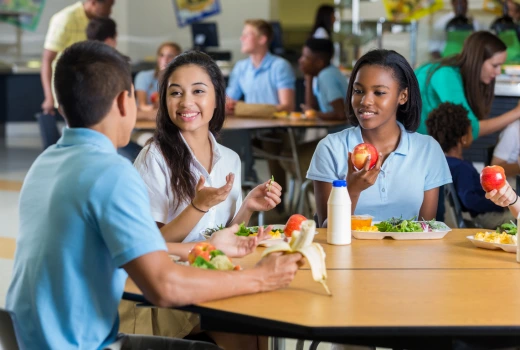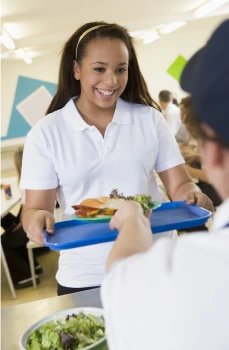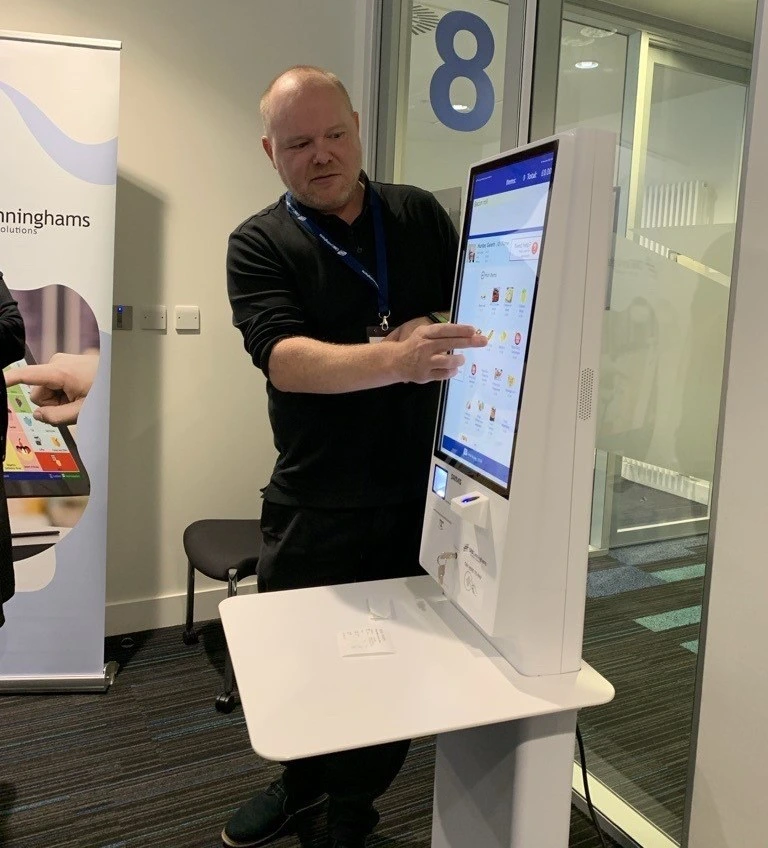Shrinkflation isn’t exclusive to retail products. The concept of reducing something while maintaining the same service is affecting school lunches and pupils’ time. Breaks are getting shorter, and pupils are still expected to order, pay, and enjoy school lunches within a limited window.
If shorter break times are here to stay, schools must look for innovative ways to ensure pupils can access nutritious school meals with enough time to enjoy lunch and socialise with friends in a limited time window.
Shrinking lunch breaks
School lunch breaks in the UK have gradually shortened over the past few decades. In primary schools, between 1995 and 2017, the average break time for key stage 1 students decreased from 94 to 85 minutes daily. Whilst 9 minutes less per day might not seem impactful, that’s 45 minutes less per week (Nuffield Foundation).
Secondary school pupils appear to be getting the worst deal. A 2019 UCL study found that a quarter of secondary schools had lunch breaks lasting 35 minutes or less, barely leaving pupils enough time to collect and enjoy their lunches, let alone socialise, exercise or attend lunch clubs.

The importance of school lunch breaks
School breaks, mainly lunches, offer pupils a much-needed respite from busy classes and, depending on the time of year, exams. Pupils need to spend time socialising, strengthening relationships with peers, and fostering a community within the school environment.
A BYU study found that pupils who enjoy lunchtime benefit from an enhanced sense of belonging, and those who actively engage with friends during lunch are likely to experience a greater sense of belonging at school. Pupils who don’t enjoy lunchtime or avoid social interactions during their lunch break can feel less connected to the school community, which can risk negatively affecting their overall school performance.

In addition to the much-needed respite and socialising lunch breaks offer pupils, the meal aspect can’t be ignored. Lunch breaks allow pupils to enjoy their favourite meal and provide energy for the afternoon ahead.
For free school meal (FSM) pupils, hot school lunches provide much-needed nutrition and, in some cases, are the main meal for the day. So, despite shorter lunch breaks, giving pupils enough time to choose, order, and collect school meals, including their preferred meal, still needs precedence.
Many schools are finding ways to adapt and improve the speed of service to ensure pupils can still benefit from an enjoyable dining experience that lets them access their favourite meals whilst still having time to socialise with friends in a limited time.
Systems like the recently launched Self-Serve Kiosks, where secondary school pupils can check out school meals using an interactive self-serve screen in the dining hall, reduce the number of pupils waiting to order their meals in the lunch queue so that schools can serve more pupils in less time.

Meal pre-ordering is one of the most effective methods for all school users, including staff and pupils, to increase the speed of service in school dining halls. The Fusion Online pre-order meal app lets pupils order school meals in advance from their mobile phones, ready to collect at lunchtime, whilst giving catering staff notice of which meals to prepare.
Whether the lunch break is 60, 45 or 30 minutes, pre-ordering school meals takes the hassle out of queuing, deciding and ordering school meals during the shorter lunch period.
What shorter lunch periods mean for pupils
Giving pupils a shorter window to enjoy their lunch can negatively impact food choices and exercise opportunities. Just like how many adults instinctively reach for convenient, less nutritious options when strapped for time or wanting a filling and quick meal, pupils risk making the same choice when faced with a limited window to choose and order their meals. Less time to access meals can also leave pupils with limited options, and they choose whatever is left, regardless of its nutritional value.
Exercise is another important factor to consider when considering the health implications of shorter lunches. Lunch breaks give pupils the time to enjoy physical activity, whether with friends in the playground, playing sports such as football, or attending lunch clubs. With eating lunches being the priority, shortening breaks can push exercise clubs to one side.
The future of school lunch breaks
The school lunch service constantly evolves, with predominantly positive outcomes but its fair share of challenges. Schools must adapt to these changes and ensure minimal impact on pupils and their right to nutritious meals and time to socialise and engage with their peers. Looking for tried-and-tested and practical solutions like meal pre-ordering and interactive dining are the essential next steps for a successful school meal service that can adapt to varying challenges.
Want to find out more? Book a demonstration with the CRB Cunninghams team and find out more about using modern school meal solutions to improve your school’s lunch service.




